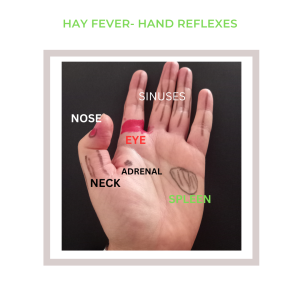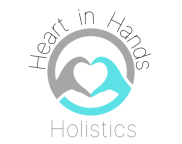Its Hay Fever Season
Whilst this year, summer is proving to be elusive. I think we’ve had about 10 days in total! For those of you who suffer with hay fever the summer brings additional challenges with or without the heat. A few of my clients have been experiencing symptoms since May, and this brings misery, with itchy throat, mouth, nose and ears, a runny or blocked nose, poor sleep and headaches.
When looking a little deeper into hay fever, I had never considered that drying your washing outside could exacerbate symptoms with pollen. I love line dried laundry, especially sheets and regularly line dry my facial towels used in treatments when I can. But not anymore. It had never crossed my mind that my facial towels and other treatment towels could be harbouring pollen, which I use on clients whom I was trying to help them with facial, hand or foot reflexology. I’ll be using an airer in doors from now on (I also have a heated airer when needed).
As hay fever is an allergic reaction to pollen from plants, your body identifies the pollen as a harmful substance and your immune system sets to work to produce antibodies to protect itself against the allergen. Histamine is released into your immune system, and this is largely responsible for the hay fever symptoms. There is also inflammation.
I’ve been told that taking locally produced honey can help to reduce hay fever symptoms. When researching this, I found the evidence confusing. However, I did find a study that showed nutritional yeast (Beta-Glucan) can help. Nutritional yeast is commonplace in vegan diets as it’s a non-dairy alternative to add a savoury cheesy hit to food. This study below found that it can help reduce symptoms. However, its not suitable for people with Crohn’s Disease or Hidradenitis suppurativa.
https://pubmed.ncbi.nlm.nih.gov/24804018/
In the UK Marigold Nutritional Yeast is available in most supermarkets, Amazon & Holland and Barret stores. It comes in a tub and looks like little flakes.
Generally, the advice is to avoid or reduce pollen exposure. This is so difficult to do as I’ve discovered that in the UK hay fever is worse from the months March- September. However, pollen count tends to be higher in the early hours of the morning, when the pollen is shed and in the late afternoon and evening (between 5pm & 8pm) when the pollen in the air descends. Dry weather also increases the pollen count as do thunderstorms. Allergy UK recommend checking local pollen counts daily. They also provide a pollen calendar-see below.
What else can you do?
Allergy UK recommends wearing wrap around sunglasses, a hat with a brim, avoiding drying washing outside, washing your hair and changing your clothes after being outside, and wiping your pet’s coat with a damp microfibre cloth to remove pollen from their fur. They also recommend air filters for your car as grass verges on motorways and roads will produce high pollen count. They have recommended filters on their website:
You could also try some reflexology self-care.
Try this reflexology sequence to try on your hands.

-start by using your thumb on R hand to make gentle rotations over the spleen reflex (green)
-then squeeze down the thumb on each hand using a pincer action with the opposite thumb and index finger, starting from either side of the thumb joint down to the base of the thumb.
-then use the opposite thumb of one hand to circle the dot area (on the photo) next to the thumb nail (this is the nose reflex).
-make small circles at the base of the index finger (red) using the thumb of the opposite hand. This is the eye reflex.
-then using your index finger and second finger in a plier’s action squeeze each finger starting at the base to the tip x3. These areas are associated with the sinus reflexes.
-repeat the sequence on the other hand missing out the first step.
References:
Talbott SM, Talbott JA, Talbott TL, Dingler E. b-Glucan supplementation, allergy symptoms, and quality of life in self-described ragweed allergy sufferers. Food Sci Nutr. 2013;1:90-101.

